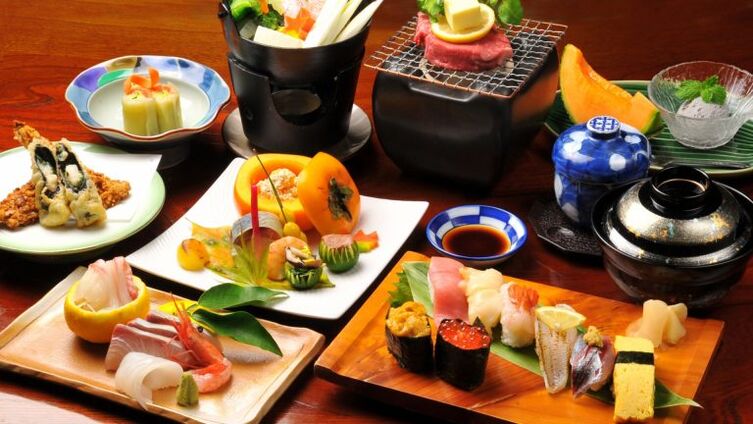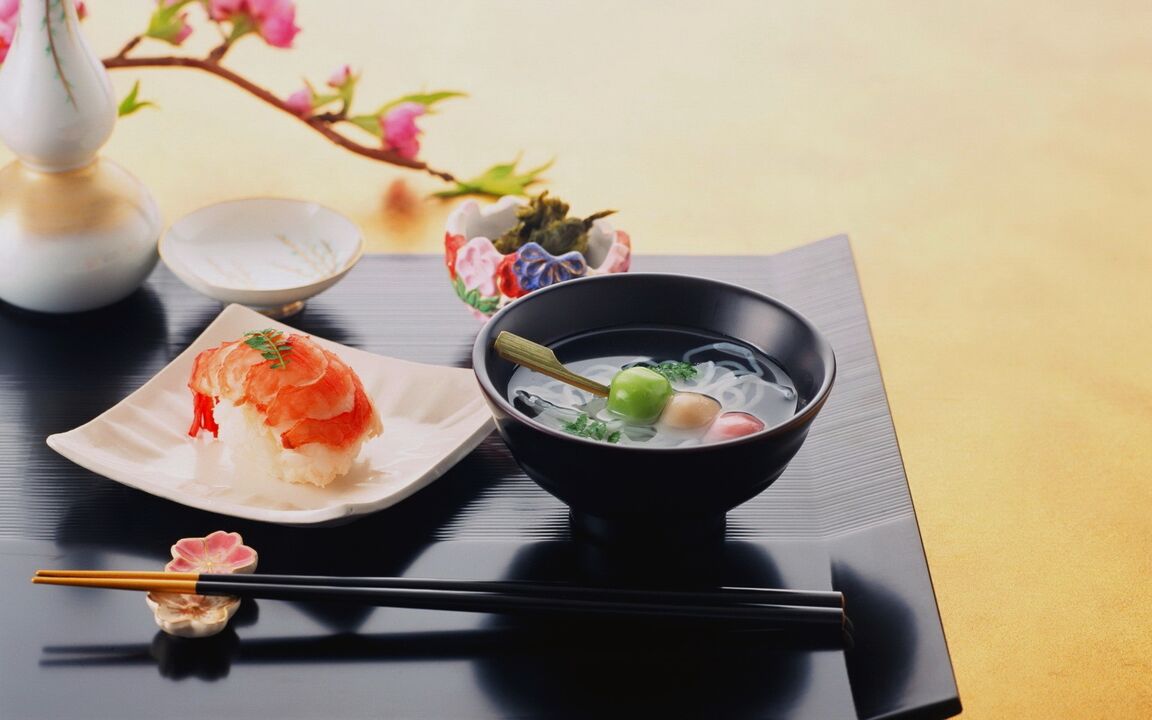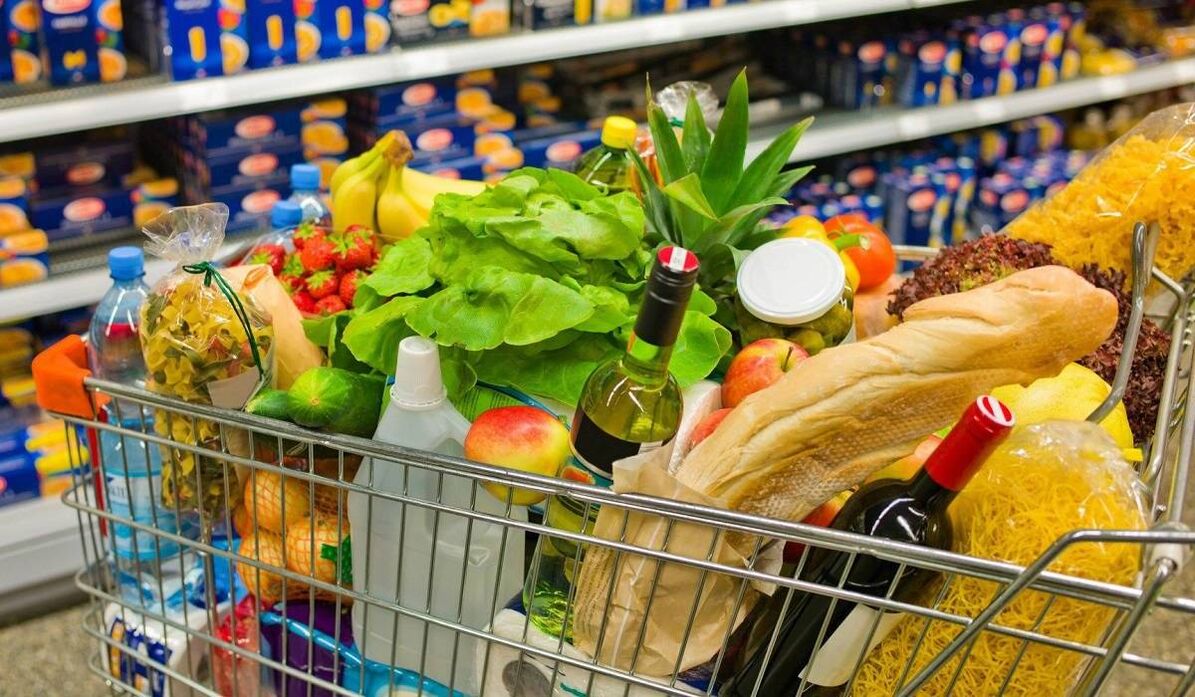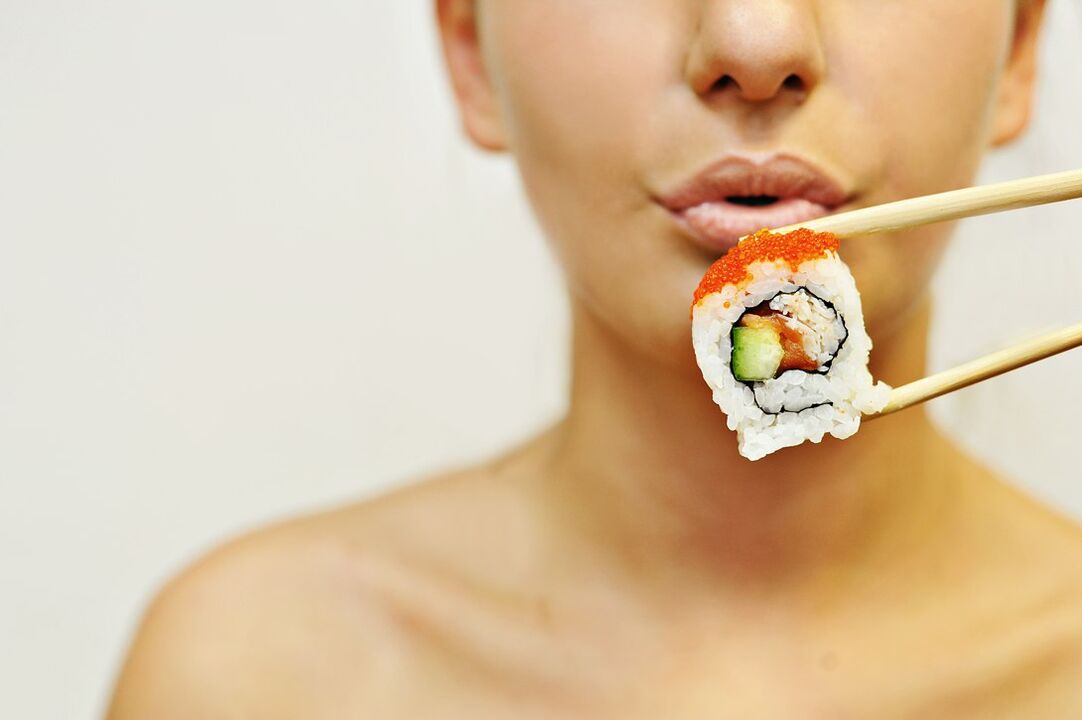In recent years, the Japanese diet has gained immense popularity, which at the same time combines fast results and well-being for the body. Moreover, the main feature of this two-week meal plan is that there is no so-called return, when everything returns to its original state after 2-3 weeks.
Japanese food is becoming more and more popular thanks to the growing popularity of Japanese cuisine in local cafes and restaurants. In almost every cooking today you can buy rolls or whatever you need to prepare them yourself. So what is the Japanese diet for weight loss?

The main features of the Japanese diet for 14 days
Let's take a quick look at what the Japanese weight loss diet is and what principles it is based on:
- The total duration is 14 days;
- Foods low in carbohydrates, low in carbohydrates and high in protein. It requires discipline and endurance;
- Total cost - no more than 2, 000 rubles for the entire cycle;
- The estimated result is 5 to 8 kg;
- Repeatability - no more than twice a year;
- Stability - high, with the correct exit from the diet after two weeks, the result lasts a long time and without return;
- Contraindications: pregnancy, during breastfeeding, with diseases of the gastrointestinal tract (ulcers, gastritis, gastroduodenitis, etc. ), with diseases of the kidneys and liver. It is also not recommended in the presence of heart problems. It is advisable to consult a child before starting
Japanese weight loss diet - a pronounced trend or real effectiveness?

The Japanese diet was previously completely unknown. Moreover, the very concept of "diet" meant a serious reduction in food and calories, all the way to and including starvation. Even with the popularization of this unique diet plan, many still believe that the Japanese diet in 14 days will consist of sushi, green tea and of course rice. However, you should not judge this diet only by traditional Japanese cuisine, all that will remind you of it for two weeks are sea fish, eggs and green tea - products that are present in many countries around the world. This is a great advantage of the diet, because the diet will contain familiar foods, without any exotic ones, which can lead to indigestion or even allergies.
It is not yet known exactly how the Japanese 14-day diet is related to the land of the rising sun. According to some reports, it was developed in one of the Japanese clinics, according to others, this diet plan was attributed to Japan because of its strict discipline, menu and effectiveness. However, it is not so much where this diet came from as the fact that it is incredibly effective and safe, when properly handled and adhered to.
As always, the Japanese menu involves reducing calories in the diet. It is based on traditional Japanese cuisine, which is known for its absence of fatty foods, abundance of vegetables and fish. One of the famous public figures and nutritionists Naomi Moriyama believes that nutrition is the secret of Japanese women who maintain their beauty and slender figure until old age. The key, he says, is low carbs and small portions.
According to Naomi's calculations, the Japanese consume 25% fewer calories than people in any other country. For example, with an abundance of various snacks, and even so-called fast foods, chips, chocolates, fatty sweets, and even butter are not particularly popular in Japan. Even "street food" is low in calories and low in fat and carbohydrates. Therefore, the menu of the Japanese diet is fully in line with the culture of food, tradition and basics of nutrition in the country.
Proper nutrition for fat burning is essential! But consider what result you want to get in the end? Are you sure that after getting rid of the fat layer you will see a taut and strong body? To tone your muscles and gain sexual volume, you need real training! And to make it easier for you, we offer a ready-made training plan diagram!
The concept and main rules of the Japanese diet

The portion sizes of the inhabitants of the CIS and Japan are significantly different, so for many a sharp transition can be a real test. But don't get upset, because this plan is designed for two weeks, after which you can slowly return to your usual diet and favorite foods.
Protein will be the basis of your diet and a source of satiety. You can only get it from the following products:
- Fish;
- eggs;
- Chicken breast;
- Milk products;
- Lean beef.
Only crackers and a few types of vegetables will go as carbohydrates. For fats - olive oil. Also, fats will be contained in fish and other protein products, which will avoid deficiency. The menu and scheme of a Japanese 14-day diet with significant calorie restriction, especially carbohydrates, can be a real challenge. However, it is worth noting that the body quickly gets used to such a diet and the second week will not be so difficult.
It is important to note that healthy fiber is present in sufficient quantities on the menu. It is found in vegetables, which can be consumed almost without restrictions (only on certain days). This eliminates all gastrointestinal problems and improves digestion. Green tea and coffee are also included in the diet. Not only will it allow you to stay awake and avoid fatigue, but it will also provide the body with a large amount of antioxidants. It is important that the tea is natural, without colors and aromas, and it is best to buy coffee beans and grind it.
By reviewing the menu for 14 days of the Japanese diet, you can be sure that all useful substances are present in this diet plan, and the main changes have affected mainly the size of portions and the amount of food consumed. Basically, in most people, two weeks pass without any consequences, but if your body has reacted too harshly to the reduction of carbohydrates, then the diet should be postponed for the future and go to the doctor. The main symptoms for this will be headache, severe weakness and fatigue.
The drinking regime is of great importance. You need to consume plenty of plain water at room temperature. First, it will help improve digestion and deal with hunger more easily by simulating a full stomach. Second, it will allow you to remove protein processing products from your body. Another important point is the strict adherence to the master plan. If you seriously decide to try and check how to lose weight on the Japanese diet, then you should consume only those foods and in the amount provided for each day. Substitutions are not allowed. You also can’t change or rearrange the days.
The only exceptions are coffee and tea. In the morning, instead of coffee, you can drink a cup of tea, depending on personal preferences. No sugar, of course. Salt is also a negative factor in the diet, but if you can’t get rid of it completely, then limit yourself to a minimum amount.
One of the main difficulties, in addition to the low calorie content, is considered to be the small number of meals per day. While other diets include 5 or even 8 snacks a day, the Japanese diet includes only 3 meals. It is also worth remembering that you need to start the day with a glass of water, it will "start" the body and metabolic processes. Dinner should be eaten no earlier than 2-3 hours, so that the food has time to digest before going to bed.
This is a strict diet, so undisturbed intake is recommended, excluding dietary transitions. This way the body will quickly adapt to the new conditions and the diet will be more comfortable. The easiest ways to prepare it would be to completely stop fast food at least 3-5 days before starting the diet, as well as reduce portions (do not eat more than half the usual size). Although this scheme may seem too rigid, it is completely balanced and does not harm the body, but at the same time allows you to lose 5-8 kg in just 2 weeks.
Preparatory period and grocery shopping

you will need:
- Coffee (ground or granulated) - 1 package;
- Natural green tea - 1 pack;
- Chicken eggs - 20 pieces;
- Lean beef (pulp) - 1 kg;
- Sea fish (fil) - 2 kg;
- Chicken fillet - 1 kg;
- Extra virgin olive oil - 0, 5 l;
- Carrots - 2-3 kg;
- White cabbage - 2 pieces of medium size;
- Eggplant or zucchini - 1 kg;
- Fruit (any except grapes and bananas) - 1 kg;
- Kefir - 1 l;
- Tomato juice - 1 liter;
- Lemon - 2 pcs.
In terms of food principles and lists, the Japanese diet is often compared and even confused with the "chemical diet" - a diet plan developed in the United States. Its creator is Osama Hamdiy, whose diet is actively used in the treatment of diabetes and obesity. The Japanese diet also uses the principle of sharply limiting carbohydrates and increasing protein intake, which changes the chemistry of metabolic processes in the body, triggering chains of reactions that lead to a sharp decrease in weight. However, there is one important difference between these meal plans. The Osama Hamdiya system includes an unlimited number of products, which allows you to count on building muscle and vigorous training. At the same time, the Japanese scheme has a strictly quantitative limit and a short period of only two weeks. This is a plus for those who want fast results and cannot exhaust the body for months, avoiding the usual diet.
Detailed menu of Japanese diet for every day

It is important to take this scheme very seriously, strictly following the recommendations. Any attempt to break the scheme or add a product may result in worse overall results than expected. The menu for each day of the Japanese diet for 14 days is as follows:
Day number 1
- Breakfast - pure coffee without milk and sugar;
- Lunch - boiled eggs (2 pcs), boiled cabbage with olive oil, 1 glass of tomato juice;
- Dinner - 200 g of fried or cooked fish.
Day number 2
- Breakfast - coffee and 1 slice of rye bread;
- Lunch - 200 g of fried or boiled fish with boiled cabbage and olive oil;
- Dinner - 100 g of cooked beef and 1 cup of kefir.
Day number 3
- Breakfast - a slice of rye bread (dry in a toaster) or a biscuit without additives. Cup of coffee;
- Lunch - fry eggplants or zucchini in olive oil (any size);
- Dinner - cook 200g of beef without salt, fresh cabbage with olive oil, 2 boiled eggs.
Day number 4
- Breakfast - one fresh small carrot with the juice of one lemon;
- Lunch - 200 g of fried or cooked fish, 1 glass of tomato juice;
- Dinner - 200 g of fruit (any).
Day number 5
- Breakfast - one medium carrot with whole lemon juice;
- Lunch - boiled fish or steamed fish with a glass of tomato juice;
- Dinner - 200 grams of fruit (any).
Day number 6
- Breakfast - a cup of coffee without sugar;
- Lunch - boiled chicken without salt (500 g), salad of fresh carrots and cabbage (season with olive oil);
- Dinner - one fresh carrot and 2 boiled eggs.
Day number 7
- Breakfast - a cup of green tea;
- Lunch - boiled beef without salt (200g);
- Dinner - optional: 200g fruit, 200g boiled beef with a glass of kefir, 200g boiled fish or 2 boiled eggs with salad (carrot topped with olive oil).
Day number 8
- Breakfast - one cup of coffee;
- Lunch - 500 g of cooked chicken without salt, cabbage and carrot salad (season with olive oil);
- Dinner - one small carrot with olive oil, 2 boiled eggs.
Day number 9
- Breakfast - one carrot with whole lemon juice;
- Lunch - 200 g of roasted or cooked fish and a glass of tomato juice;
- Dinner - 200 g of fruit of your choice.
Day number 10
- Breakfast - a cup of coffee;
- Lunch - 3 small carrots (fried in vegetable oil), 1 egg and 50 g of cheese;
- Dinner - 200 g of any fruit.
Day number 11
- Breakfast - a cup of coffee and 1 slice of rye bread;
- Lunch - fry eggplants or zucchini in olive oil (any amount);
- Dinner - 200 g of boiled beef, fresh cabbage with olive oil, 2 boiled eggs.
Day 12
- Breakfast - a cup of coffee and a slice of rye bread;
- Lunch - 200 g of fried or cooked fish, fresh cabbage with olive oil;
- Dinner - 100 g of cooked beef and 1 cup of kefir.
Day number 13
- Breakfast - a cup of coffee;
- Lunch - 2 boiled eggs, boiled cabbage with olive oil and 1 glass of tomato juice;
- Dinner - fry 200g of fish in olive oil.
Day number 14
- Breakfast - a cup of coffee;
- Lunch - fried or boiled fish, fresh cabbage with olive oil;
- Dinner - 200 grams of cooked beef, 1 cup of kefir.
It is believed that this diet allows you to achieve the longest lasting and stable results, without returning to normal weight. After losing weight, it is possible to maintain weight for up to 3 years, but only under the condition that you strictly adhere to the diet and do not start to make up for everything with high-calorie food immediately after the 15th day. Also, a great solution would be to adjust the Japanese meal plan to your daily diet.













































